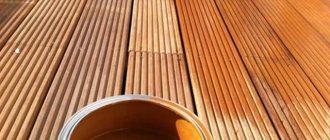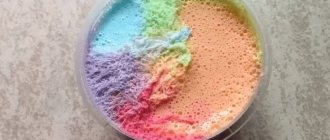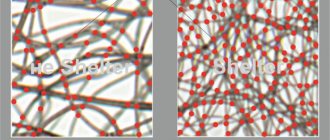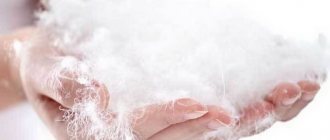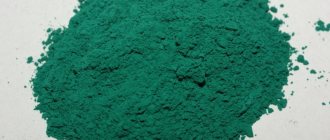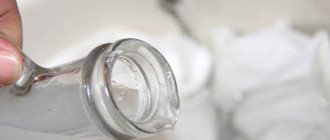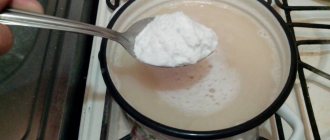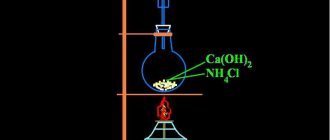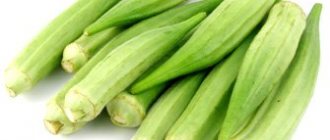Home / Fillers
Back
Published: 06/16/2021
Reading time: 5 min
0
22
Bio-down appeared in the 70s. last century and quickly became one of the most popular substitutes for natural materials. In terms of its qualities, it is not much inferior to fluff and wool, and in terms of safety and harmlessness to the body, it is even superior. Initially, bio-down was used in outerwear and equipment for polar explorers, but soon became indispensable in other industries.
- 1 History of appearance and production
- 2 Pros and cons of filler
- 3 Temperature
- 4 Comparison with popular insulation materials
- 5 Application of material
- 6 How to wash eco-down
- 7 Product reviews
- 8 Conclusion
History of creation
Bio-down was supposed to be an innovative material that would help the clothes of polar explorers retain heat longer. Its development began about 50 years ago. This was a complex process, because many requirements were placed on such a filler: lightness, the ability to retain heat, sufficient density, and others, otherwise such clothing could not be used in difficult temperature conditions.
But the very appearance of just such material is an accident, for which we must thank a technical glitch in the program. Machines accidentally started recycling the stuff used to make duct tape. And it turned out that it can become one of the warmest fillers.
Over time, two large companies producing fabric fibers: DuPont and Thinsulate joined forces to improve bio-down and make it warmer, lighter, and also add new positive characteristics. The first company is known as the largest manufacturer of synthetic fabrics that the world has never seen before: neoprene, nylon, etc. The second gave the world Thinsulate - a filler for outerwear that no one would refuse.
Properties and characteristics
Bio-fluff has many advantages.
- Retains heat well. This is one of the warmest fillings in which you will certainly not freeze. Some types of outerwear are designed for temperatures even down to -60 degrees Celsius, but on average such a down jacket can be worn down to -30 degrees.
- Easy. In this respect, bio-down is similar to Thinsulate, which also has a high heat capacity in relation to its thickness.
- Elastic. During production, polyester fibers are twisted into a spiral shape and woven together. This allows the material not to lose its structure over time.
- Safe to use. Microorganisms do not multiply in its environment, dust mites and other unpleasant neighbors do not appear. In addition, this material does not generate electric shock during friction and does not allow dust to enter.
- Resistant to moisture. Bio-down does not allow moisture to get into the fibers, so it is not scary to get caught in rain and wet snow - it will dry quickly.
- Retains its shape. Even after a while, it does not crumple, its fibers do not come out through the lining fabric
- Breathing. It is easy for air to pass through the fibers of this material because they are twisted in a spiral. This means that you will not sweat in such a jacket, feeling the greenhouse effect.
- Resistant to chemicals and high temperatures. It will be easy for you to wash such a product because it does not require the use of any safe detergents. It will also withstand dry cleaning, which will make caring for your clothes much easier.
- Hypoallergenic. This is a synthetic material, so it is suitable for everyone: children, allergy sufferers. The composition does not contain natural materials such as bird feathers or sheep wool, so people with allergies may not be afraid of this filler.
- Fireproof. In an open fire, such clothes will not catch fire, but will begin to melt.
Among the disadvantages, it is worth noting the high cost, which is caused by the costs of production processes. Bio-down cannot be classified as a budget filling option, but it’s worth spending once - and this down jacket will stay with you for many years.
Application
In addition to winter jackets and down jackets, bio-down is used in making winter shoes, gloves, warm pants and hats. At ski resorts and on hiking trips, almost all paraphernalia consists of sustans. Thanks to the light weight of clothing, it is more convenient for a person to move around the area and not freeze.
The material is also used to fill bed linen. Blankets and pillows are light and elastic, and at the same time always remain the same shape. In addition, bio-fluff is used in children's toys and women's cosmetics.
Filler composition
The basis of bio-down is Sustans - a filler certified by a first class license. It is a polyester fiber. When they are twisted together, a small layer of silicone is added to the composition for greater thermal insulation.
Expert opinion
Alyona
Fabric expert and technologist Alena Khlebnikova is ready to answer your questions.
Write me
Sometimes polyolefin, polyethylene styrene and meta-aramid fibers are added. The exact composition of the material depends on what characteristics it should have.
Advantages and disadvantages over other fillers
Comparing bio-down with other fillers, one can note its superiority over many of them:
- Eco-down is a natural material reminiscent of swan down. Due to its origin, it often causes allergies. This is the advantage of bio-down - it is similar to eco-down, but is absolutely safe for allergy sufferers and children.
- Holofiber - similar in structure and appearance, but not as wear-resistant. It rolls into clumps faster, but is cheaper.
- Synthetic fluff is a cheap material that shrinks after just a few washes. Biofluff surpasses it in wear resistance.
- Synthetic winterizer is not as warm and resistant to damage as all polyester products.
The only disadvantage of bio-down is its high price, but it corresponds to the quality. If you are looking for a budget option, then you should look at another filler.
How do users respond to this insulation?
People who have spent at least one season wearing an eco-down jacket speak positively about this type of insulation.
It warms perfectly even in the most severe frosts, is light in weight, and caring for it is a pleasure. Jackets with such filling have a fairly budget price, and therefore they are accessible to everyone. Tatyana K, 33 years old, Kaluga: I spent a long time choosing between Thinsulate and eco-down and chose the latter. Very pleased! I’ve been wearing this jacket for two years now, and I wash it myself. It looks like new, the fluff has not come out, has not thinned or become deformed.
Vladimir G., 49 years old, Tver: I used to buy jackets made from padding polyester, but now I prefer down jackets made from eco-down. They are light, but warm, and do not require special care. And the price is good. Much cheaper than holofiber and Thinsulate.
DIY vest made from old jeans
What kind of fur are fur coats made of?
What temperature is bio-down designed for?
Biofluff is divided into several types, each of which has its own unique properties and temperature endurance.
| Class | Subclass | Peculiarities |
| C | C | Attached to the main fabric with glue every 15 cm |
| C.S. | Has a non-woven layer, attached to the fabric every 25 cm | |
| CDS | It has a non-woven layer on both sides, so it is attached only to the seams of the product | |
| TIB | TIB 100 (the number indicates the density of the material) | The most voluminous type, because it contains polyolefin (about 5%) |
| TIB120 | ||
| TIB 200 | ||
| P | P 100 | Does not wrinkle, and is also additionally reinforced with a layer that prevents fibers from shedding |
| P 150 | ||
| P 230 | ||
| B | B 100 | Resistant to wetness and compression |
| B 200 | ||
| B 400 | ||
| FR | — | Fire-resistant, used for sewing firefighter uniforms |
You can understand what temperature the product will withstand by looking at the density of the bio-fluff. Types with a density of up to 100 grams per m2 are only demi-season clothing that will not withstand more than 10 degrees below zero. Up to 200 g/m2 is the most common figure, most often found among biodown casual clothing. It is designed for frost of about -15 degrees. 400 g/m2 is used only for sewing workwear, because here the temperature is already about -35 degrees, but can even reach -60.
How is it used to insulate clothing?
Ecopooh is one of the most popular and well-proven insulation materials. It is used in sewing outerwear (jackets, down jackets) and is used in the manufacture of sleeping bags, ski suits, fishing and hunting equipment. The material has become so popular that it is used to insulate children's overalls and envelopes for newborns. As for eco-down outerwear, it is divided into the following groups:
- products designed to reach -10 °C have fairly light padding;
- down jackets with medium padding, for temperatures down to -15 °C;
- items intended for low temperatures down to -40 °C.
When buying a jacket with eco-down, pay attention not only to the type of insulation, but also to the outer material . It should be dense and impenetrable. Make sure the seams are well taped. The better they are designed, the warmer you will be in your outerwear.
Recommendations for caring for products with bio-down
For things to last a long time, they need to be properly cared for. Products made from bio fluff require compliance with the following care rules.
Wash
- the temperature is no more than 40 degrees - if it is higher, the fibers may shrink or even melt;
- spin no more than 600 rpm;
- washing mode – for delicate items;
- Avoid machine drying to prevent the product from becoming too wrinkled;
- do not hang your jacket in direct sunlight or near heaters;
- Conditioner will help maintain the softness and elasticity of the fibers when rinsing;
- bio-fluff tolerates dry cleaning well, so for complex stains you can use the services of professionals;
- liquid laundry detergent will be washed out of fibers better than dry laundry detergent;
- turn on the re-rinse mode to ensure that the item is thoroughly rinsed;
- Can also be washed by hand.
How to straighten
Before you start drying the item, you need to straighten the insulation well. Lay the down jacket horizontally and shake its parts one by one to straighten any lumps that may have formed. If you feel that the filler has got lost somewhere, separate it with your fingers.
The product must be shaken periodically, several times during drying.
Drying
To prevent the insulation from falling all the way down, the item is placed horizontally on a towel or other absorbent fabric. The main thing is that it does not fade onto the product, so it is better to choose a white color.
How to care for things with eco-down?
In order for a thing to serve as long as possible, it needs to be properly cared for. Fortunately, eco-down is an unpretentious material. You don’t have to go to the dry cleaner; you can get your winter jacket in order at home. The insulation does not thin out, retains its original shape, and does not bunch up.
Is it washable?
Machine washable, but it is better to use the delicate cycle. Follow these guidelines:
- do not wash the jacket in hot water, no more than 40 ° C;
- the spin mode should not exceed 600 rpm;
- Do not dry clothes on a radiator or near a radiator;
- hang the product on hangers, place it on the balcony and wait until it dries completely.
Housewives often face the following problem: after washing, white powder spots appear on a winter jacket with eco-down. To prevent this from happening, give preference to gel powder . Set the additional rinse mode. This way you will be sure that the item will not have to be washed again. And don't forget about fabric softener. It will give the item a pleasant smell, and after washing the down jacket will not look wrinkled.
What to do if the cuffs and pockets of the product are very dirty? Arm yourself with laundry soap or any stain remover, apply the product to the contaminated areas, and leave the down jacket for 20–30 minutes. After this, the winter jacket can be put into the washing machine.
Do not store eco-down products in a vacuum bag for a long time.
A pre-dried jacket can be ironed. But be careful and choose your iron temperature setting based on the material of the top. It is recommended to store the item in a closet, in a horizontal position. Fold the down jacket carefully, do not squeeze it too much, otherwise kinks may form at the folds.
